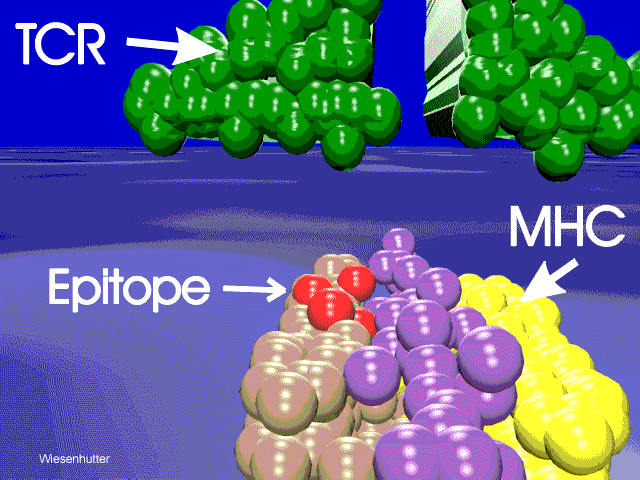U.C.L.A. Rheumatology Pathophysiology of Disease Course Lecture,
Second Year Medical School 1997
Rheumatoid Arthritis Figure 4

U.C.L.A. Rheumatology Pathophysiology of Disease Course Lecture, |
|||||||||||||||
Rheumatoid Arthritis Figure 4 |
Page 49 | ||||||||||||||
 |
|||||||||||||||
| Figure 4. A close-up of the schematic drawing of HLA-DR4 in figure 3 which better depicts the relationship of the disease associated epitope to the antigenic peptide. The upper oriented amino acids of the susceptibility epitope will interact with the TCR as it contacts the MHC-peptide complex. There are several theories as to why the epitope is associated with rheumatoid arthritis. One of the most commonly cited theories is that people who inherit this epitope are capable of allowing a pathogenic peptide to bind to the cleft. However, the actual basis for the association is unknown. 640 x 480 pixels 58kbs freehand 3dstudio max | |||||||||||||||
| Click Picture or here to Return | |||||||||||||||
| Page 49 | |||||||||||||||
| About Us | Contact Us | ©2005 | This web site has been developed and maintained by Craig W. Wiesenhutter, M.D. | ||||||||||||||